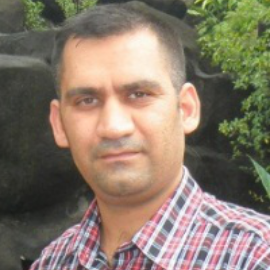
A. Z. Yonis
Work place: College of Electronic Engineering, University of Mosul, Mosul, Iraq
E-mail: aws_zuher@yahoo.com
Website:
Research Interests: Information Security, Network Architecture, Network Security, Information Systems, Information Retrieval
Biography
Aws Zuheer Yonis graduated from department of Computer Engineering at the Technical College in 2003 and completed his Master on Electrical and Electronic Telecommunication Engineering at University Tun Hussein Onn Malaysia (UTHM) in 2011. Currently he is studying doctorate of Telecommunication Engineering at UTHM from 2011. Since 2006, he became an engineer at college of electronic engineering at university of Mosul- Iraq. He has many publications in international journals and conferences. He is interested in wireless network, information security and mobile communication. He is a member of IAENG, SCIEI, SIE, CBEES, SDIWC, IACSIT, and Syndicate of Iraqi Engineering.
Author Articles
Downlink and Uplink Physical Channels in Long Term Evolution
By A. Z. Yonis M. F. L. Abdullah
DOI: https://doi.org/10.5815/ijitcs.2012.11.01, Pub. Date: 8 Oct. 2012
Long Term Evolution (LTE) defines a number of physical channels to carry information blocks received from the MAC and higher layers. This paper presents two types of Physical channels: the first type is downlink physical channels which consist of Physical Broadcast Channel (PBCH), Physical Downlink Shared Channel (PDSCH), Physical Multicast Channel (PMCH), Physical Downlink Control Channel (PDCCH), Physical Control Format Indicator Channel (PCFICH) and Physical Hybrid ARQ Indicator Channel (PHICH). The second type of Physical channels is uplink physical channels which consist of Physical Uplink Shared Channel (PUSCH), Physical Uplink Control Channel (PUCCH) and Physical Random Access Channel (PRACH). This paper also highlights the structure of PDSCH and PUSCH, discuss the algorithms of the two types of physical channel and each of its features. The aim of this paper is to discuss the well-designed PHY Channels which provide high cell-edge performance with specific features, such as dynamic bandwidth allocation to users, the design of reference signals and control channels. These channels take into account a more challenging path loss and interference environment at the cell edge.
[...] Read more.Other Articles
Subscribe to receive issue release notifications and newsletters from MECS Press journals